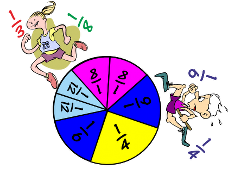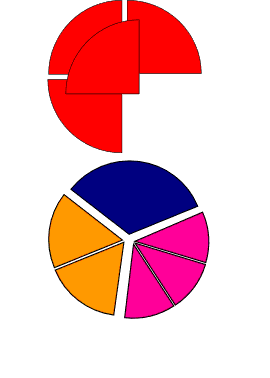- Home
- Fraction Games
- Fraction Circles
Fraction Circles
What are Fraction Circles?
Maybe you already know what they are and that's why you arrived at this page.
If you're not so familiar with these circular fractions, you'll learn how beneficial they can be for helping students get a handle on fractions. They allow students to explore fractions in a hands-on and visual manner.
- Equivalent fractions
- Common denominators
- Comparing fractions
- Ordering fractions
- Basic operations of fractions
You may also want to check out this fraction circle game for your students that will help teach and reinforce Equivalent Fractions!

Suggested Activities
It's a good idea for your students to get familiar with the circles by giving each of them a set and a small bit of time to explore them and how the different circles relate to each other.
- Have students count the number of red pieces it takes to make one whole. Then have someone or all of the students count the number of green pieces it takes to make one whole. Do this for as many of the different colored circles as you feel gives them a sense of is
- Have pairs of students compare a circle divided into more parts with one divided into a lesser number of parts. Then they should discuss what observations they are able to make.
- Comparing Ordering Fractions: Which fraction is larger: 2/3 or 5/6? How do you know? Put the following fractions in order from smallest to largest: 2/5, 3/4, 1/3, 4/8.
- How many different ways can you make one-half? one-third? one-fourth?
- Equivalent fractions: What is another fraction that is equivalent (the same as) to three-fourths? nine-twelths?
- Adding Fractions: Add 1/2 + 2/3 with the fraction circles. What other way (equivalent fraction) is there to represent this sum?
- Division of Fractions: How many times does 1/10 fit into 3/5? This has the same meaning as 3/5 / 1/10.
Go to main Fraction Games page
Return from Fraction Circles to Learn With Math Games Home



